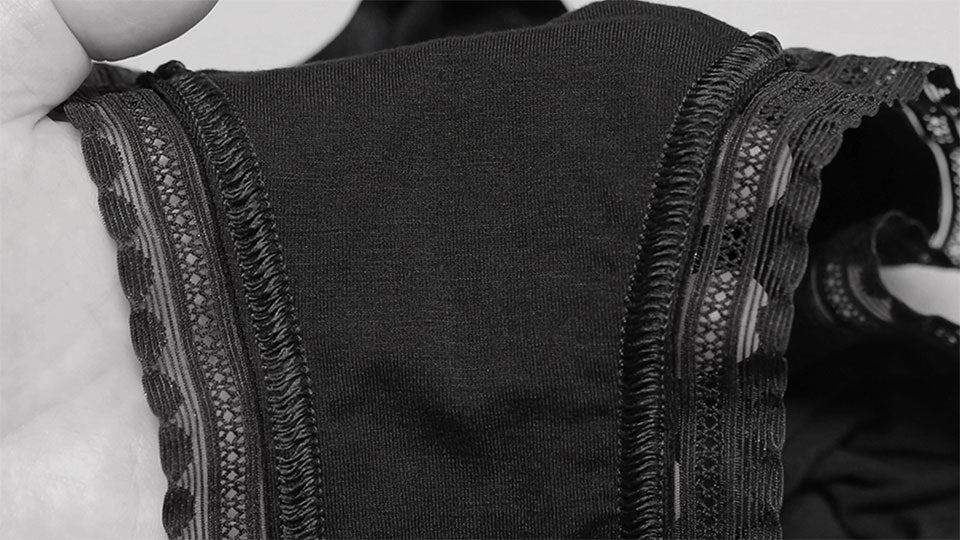
Why do we wear knickers?
Share
Perhaps it feels like a silly question, but have you ever taken a few moments to really think about it? Because knickers aren’t just cute, they serve quite a few functions that impact your wellbeing.
Knickers can be beautiful, sexy, fun, and you hopefully feel comfortable wearing them. We primarily use underwear to help protect our outer garments from getting dirty, example from sweat, and to help protect our bodies from the rougher outer garments. They act as a softer protective layer and have even helped shape the fashion silhouette historically. Most knickers today have a second layer of fabric in the gusset, the narrowest part of the knicker that goes between your legs, and it’s this gusset lining we want to shine some light on now.
The gusset lining is most commonly made of cotton jersey and has quite a few important functions. It reinforces the knicker in the crotch area, helping your knicker last longer from wear and tear. It catches discharge, sweat, and other bodily fluids, keeping you dry and comfortable. Even if the knicker itself is made of cotton, a second layer of lining helps absorb more fluids. This in turn helps protect your outer garments from getting stained and reduces the need to wash them excessively. It’s also there for your comfort. A pair of knicker without a gusset lining can rub against your skin and, depending on what material your knickers are made of, quickly become very uncomfortable and cause irritation. The lining acts as a soft cushion, protecting both you and your outer garments. If all of this was not enough, the lining can also help your body to breath and stay healthy. Synthetic materials like polyester and nylon aren’t usually very breathable, so the extra layer of cotton really helps.
Considering all these great benefits of the gusset and it’s lining; many knickers out there doesn’t have a great gusset. It might be too short, too narrow, or it’s missing a lining all together. Can you guess why? On multiple occasions during my career, I have heard several designers and buyers say that the gusset "looks ugly and should be invisible". They don’t like how it looks on a hanger and the shop appeal is more important than function. So, the gusset its moved and made smaller to accommodate. However, when the gusset is positioned too far down, or is too narrow, your discharge will most likely end up above or to the sides of the gusset and it will not be able to help protect you or your outer garments.
The next time you go shopping for a pair of knicker, I would love it if you took some time to really consider the gusset. Ask yourself if it’s wide enough to fit you comfortably? Is the gusset positioned optimally for your body, is it long enough and does it have a gusset lining? When you think about the knickers in your drawer, I bet you have pairs that you prefer over others, but have you ever thought about the reason? Perhaps your least favourite pair has a narrow gusset, and you get a severe case of camel toe when you wear them?! Or you can only wear some knickers during specific weeks of the month because they can’t accommodate even the smallest panty liner? When I developed QNTL’s knickers, I spend a lot of time thinking about all of this and fitting multiple options before I was happy with the result. The gusset is only a small piece of fabric, but it has a huge impact on weather or not a new pair of knicker will be your absolute favourites.
/Sandra Fowler
Founder, designer & seamstress
